Starting on January 1, 2008, InfoRetriever with InfoPOEMs will be renamed Essential Evidence Plus.
Essential Evidence Plus will continue to feature InfoPOEMs (the daily EBM content alerting service), and the robust EBM search application formerly known as InfoRetriever. Plus, two new resources will become available:
EBM Guidelines – 1000 practice guidelines, 3000+ Evidence-Graded Summaries and 950+ high quality photographs
e-Essential Evidence (available Spring 2008) – 800 brand new topics designed to provide evidence-based answers to your most important clinical questions
Complete list of the tools and resources that will be included in Essential Evidence Plus.
Product access rights and core functionality for our existing subscription should remain the same and we do not anticipate that this update will result in a service interruption. Questions? Please contact us.
Web of Knowledge, the online resource that provides you with cited reference searching (Web of Science), a journal table of contents awareness service (Current Contents Connect), and journal performance metrics like impact factors (Journal Citation Reports) is changing it’s look in January.
WHAT YOU SEE NOW
Here’s our current start screen for Web of Knowledge. Note that you can try out the new version at the top of the screen.
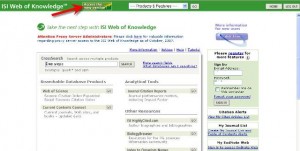
WHAT YOU’LL SEE AFTER JANUARY 27TH
The new version offers a search form that searches all databases on the very first page.
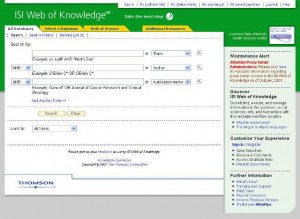
Looking for Current Contents or Journal Citation Reports? Check under ‘Select a database’ or ‘additional resources’.

A NEW LOOK FOR SEARCH RESULTS
Look on the right side of the search results screen to view references, who’s citing the article, and other useful information.
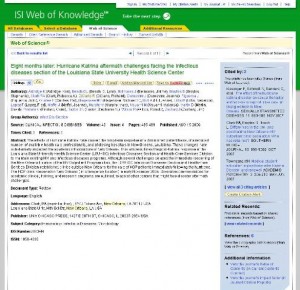
IMPROVED TOPIC SEARCH
Easily refine your search results by subject, author and more.
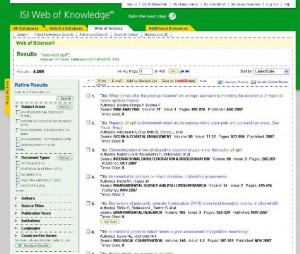
The library plans to offer a class on the new Web of Knowledge in February of 2008. For more info, email mknapp@lsuhsc.edu
If you have an iPhone you’ll be pleased to know that Epocrates Online has released a free web-based drug reference that’s optimized for iPhone and iPod touch devices. Just point your Safari browser to the following url to access over 3300 drug monographs (Note: you may be prompted to register with Epocrates):
http://m.epocrates.com/iphone
Currently there’s not much medical software available for iPhone/iTouch. In fact, Apple only recently announced that they would allow developers to create iPhone software in early 2008. However, you can always use the Safari browser on your iPhone to access the many medical databases we have available online, just like on a computer.
A new study published in the Archives of Pediatrics and Adolescent Medicine this month states that honey works better to soothe nighttime coughs than cough syrup (ingredient dextromethorphan). The story was picked up my many major news organizations and can be read on the MedlinePlus news feed.
Remember that the Isché Library is open until Midnight every night through the end of exams (December 20th). Stay and study until you turn into a pumpkin.
…may break your bones, but words are just as damaging.
In September 2006, the Centers for Disease Control and Prevention (CDC) convened a panel of experts to discuss issues related to the emerging public health problem of electronic aggression by adolescents. Aggression ranges from embarrassment to threats of real world violence.
A special issue of Journal of Adolescent Health summarizes the data and recommendations of this panel.
New from the publishers of the PDR: PDRhealth.com, a free consumer health website.
Thomson Healthcare publishes the Physicians?óÔé¼Ôäó Desk Reference (PDR), a clinical resource on drug and disease monographs. PDRhealth.com is a free consumer health website based on the same information platform as the PDR.
PDRhealth.com offers drug & dietary supplement information, disease info and online health tools like cholesterol calculators and a drug interaction checker, in order to make critical health information accessible to consumers.
Individuals can also sign up to receive electronic newsletters, alerts on new clinical trials, and any new information about prescription drugs. The only thing lacking are pictures of the drugs and supplements, which are always available in the print edition of the PDR (available at our Circ. Desk & in Reference at QV 22 AA1 P56).
Did you know?
U.S.-based MDs, DOs, Dentists, Optometrists, NPs and PAs and U.S. medical students, residents and other select prescribing allied health professionals have FREE online access to the PDR and Thomson Clinical Xpert (registration required).
The Library will be open late on Fridays & Saturdays throughout the month of December for university exam hours. The schedule is as follows:
| November 26th – December 20th |
| Monday through Friday |
8 a.m. – 12 midnight |
| Saturday |
9:30 a.m. – 12 midnight |
| Sunday |
12 noon – 12 midnight |
The Isché Library will closed today (Wednesday, Nov. 21st) at 8 p.m. It will re-open on Sunday, November 25th at 1:30 p.m. And Exam Hours begin on Monday.
Did you know?
Thanksgiving is also the fourth annual National Family History Day.
Over the holiday or at other times when families gather, the Surgeon General encourages Americans to talk about, and to write down, the health problems that seem to run in their family. Learning about their family’s health history may help ensure a longer, healthier future together.
My Family Health Portrait, a tool from the US Surgeon General, allows you to create a personalized and printable family health history report from any computer with an Internet connection and an up-to-date Web browser.
https://familyhistory.hhs.gov/
“The average American gains five pounds over the holiday season.”
It’s a common assertion over the holiday season, but where is the evidence?
“A Prospective Study of Holiday Weight Gain” from the New England Journal of Medicine (published March 23, 2000) investigated this claim and found that Americans experience a net 0.48-kg weight gain in the fall and winter. “Since this gain is not reversed during the spring or summer months,” the study found, “[the weight gained] probably contributes to the increase in body weight that frequently occurs during adulthood.”
Two more recent studies also investigate the 5 pound phenomena.
“The effect of the Thanksgiving holiday on weight gain.” from the Nutrition Journal (published 21 November 2006) and “The effect of the holiday season on body weight and composition in college students” from Nutrition and Metabolism (published December 2006) assessed potential changes that occur in body weight during the Thanksgiving holiday break in college students and found participants gained a significant amount of BW (0.5 kg) during the Thanksgiving holiday. “While an increase in BW of half a kilogram may not be cause for alarm,” the authors noted, “the increase could have potential long-term health consequences if participants retained this weight gain throughout the college year.” In fact, although average body weight remained relatively unchanged from pre-Thanksgiving to post-New Year’s, a significant positive relationship existed between the change in BMI and percent fat, total fat mass, total fat free mass, and trunk fat mass for the pre-Thanksgiving and post-New Year’s visits.
So what is to be done about it?
A study from the International Journal of Obesity (London) looked at “The role of conjugated linoleic acid in reducing body fat and preventing holiday weight gain.” Conjugated linoleic acid (CLA), is a naturally occurring dietary fatty acid shown to reduce body fat in animals. In a randomized, double-blind, placebo-controlled study among overweight adults, 3.2 g/day CLA significantly reduced body fat over 6 months and prevented weight gain during the holiday season. “Although no adverse effects were seen,” the study reports, “additional studies should evaluate the effect of prolonged use of CLA.”
Can’t get your hands on linoleic acid isomers?
Check out these tips on having a healthy holiday:
Heft for the Holidays: How to Hold Off Those Extra Pounds from NIH News in Health
Healthy Holiday Eating from SAMHSA’s Family guide
Holidays the Healthy Way from the CDC
Holiday Meal Planning from the American Diabetes Association
Seasonal Food Safety from the USDA
Countdown to the Thanksgiving Holiday from the USDA
The Louisiana 2 Step Initiative
Surviving Thanksgiving: Keep Food Safe, Don?óÔé¼Ôäót Overindulge from the LSU AgCenter
The United Health Foundation recently released its 2007 state health rankings.
The good news:
Louisiana has improved from last year!
The bad news:
We’re still number 49.
Today’s Times-Pic takes a look at Louisiana health care quality. You can also read the UHF report, which offers state health snapshots and other statistical information here.
The Dental Collection has been fully restored to the Dental Library. Although further adjustments will be made, it’s good to have access to that collection again. It has been in climate controlled storage since the storm.
Micromedex has a new search option for clinicians at the point of care. Get fast solutions to clinical questions with the new Point-of-Care Solution.
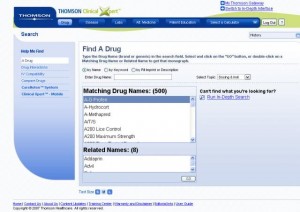
The Point of Care solution offers
?óÔé¼?ó Quick on-the-floor access
?óÔé¼?ó Intuitive workflow-based interface
?óÔé¼?ó Trusted summary-level information
Where is it?
Use either link on the Micromedex homepage to access the new look.

More Features
* Fewer clicks to get the answer you need
* No lengthy documents to scan
* Seamless searching across content areas (without re-entering your search term)
* Word Wheel searching
* Spelling help
Plus, it offers enhanced summary drug information:
* Indications and Dosing ?óÔé¼ÔÇ£ now includes efficacy, strength of evidence, and strength of recommendation ratings
* Regulatory Status and Generic Availability ?óÔé¼ÔÇ£ displayed in the summary document
* Drug Toxicity (New Section) ?óÔé¼ÔÇ£ provides information on clinical effects, treatment,
and range of toxicity
* Clinical Teaching (New Section) ?óÔé¼ÔÇ£ offers point-of-care counseling information for clinicians to use when educating patients about their medications

 myLSUHSC
myLSUHSC




